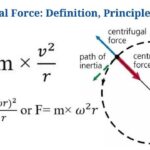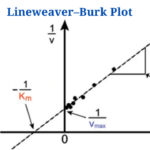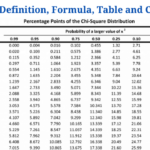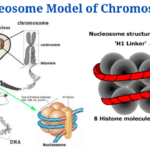Primary Succession Definition
Primary succession is a type of ecological succession that occurs in a newly formed ecosystem that lacks habitable soil, but is then colonised by living creatures for the first time.
- A series of events that occur in order to build a stable ecosystem is known as primary succession.
- Natural phenomena such as volcanic or glacier eruptions, which result in a lack of soil or the absence of living organisms, are commonly responsible for the formation of new ecosystems.
- Pioneer organisms are groupings of organisms that colonise these settings and are typically made up of lichens, algae, and fungi.
- Primary succession starts with the weathering of rocks to create soil for the pioneer species to live in.
- The start of primary succession is usually triggered by either a biological or an exogenous cause.
- Once some soil is developed, organisms with low soil requirements, such as lichen, begin to grow in these regions. These organisms come from a separate environment to enter the new one.
- These species also aid in the breakdown of mineral-based rocks such as lava or glaciers into the soil, allowing other species to live there.
- The pioneer species will continue to grow, reproduce, die, and degrade, leaving pockets of soil for other species to establish and thrive in.
- The breakdown of these organisms contributes to soil formation by increasing the organic content of the soil.
- Throughout the sequence, this technique is repeated several times. New species enter into the ecosystem produced by the preceding species in each new stage, and some may even replace the prior species.
- Fast-growing vegetation colonises these places over time, eventually covering the majority of the ground. Large tree seeds eventually make their way to the new environment via the wind or birds, attracting additional species.
- During primary succession, the ecosystem alters constantly as new species arrive, eventually leading to a more stable state.
- The community that forms during the ecosystem’s stable stage is known as the climax community.
- The composition and environment are substantially less changeable at this time than in previous ecosystems.
- Primary succession is a long and drawn-out process that can take years to complete.
- The development of a new ecosystem after a volcano, glacier eruptions, or a nuclear explosion are all examples of primary succession.
Click Here for Complete Biology Notes
Secondary Succession Definition
Secondary succession is a form of ecological succession that occurs when a previously established ecosystem is disrupted by an event such as a fire or a hurricane, and then recolonized by other organisms.
- Secondary succession, unlike primary succession, begins in an area that already has soil.
- Secondary succession occurs in an environment where the primary succession has been disturbed yet certain plants and animals still remain.
- This sort of succession usually occurs after a disaster, such as a forest fire, hurricane, or harvesting, which destroys the previous ecosystem.
- External influences are always involved in the commencement of secondary succession.
- Following a forest fire, the towering trees are gone, and the first plants to emerge are usually annual plants.
- Grass and low-lying plants, as well as other pioneer species, are the following annual plants.
- In secondary succession, the early invaders are also known as “pioneer species,” as they are in primary succession.
- Unlike those in primary succession, these pioneer species are largely derived from the community’s pre-existing groupings of organisms.
- Changes in the environment generated by the expansion of grasses result in the emergence of new plant groupings such as shrubs and herbs throughout time.
- These organisms are known as intermediate species, and they cause further changes in the environment, allowing taller plants to flourish.
- Finally, the environment’s composition returns to its original or pre-fire form over a long period of time.
- Seed dispersal and seed production are two elements that influence the trajectory of succession.
- The composition and interactions within the community are also influenced by other elements like as landscape shape, climate, pH, bulk density, and soil texture.
- The trophic interaction, the original composition of the environment, and the competition-colonization processes all influence the type of the community created following secondary succession.
Important Differences between Primary Succession and Secondary Succession
[ninja_tables id=”3890″]How to increase Brain Power – Secrets of Brain Unlocked
Examples of Primary Succession
Primary succession after a nuclear explosion
- It was expected that no life would arise in places tested for nuclear weapons for centuries.
- However, it was discovered that primary succession began within 30 years in such regions.
- These are referred to as “dead zones” since no life could conceivably exist in them for years.
- After several years, all of the dangerous radiation in the area created by a nuclear explosion has dissipated.
- Primary succession after a nuclear explosion begins with the weathering of existing rocks, as it does in all other situations.
- Pioneer species such as lichens and algae enter the ecosystem as rocks begin to break down, resulting in the first groups of living beings to form.
- As the succession process proceeds, a new group of organisms takes the place of the old, resulting in an increase in organic matter in these locations.
- A stable climax community or ecosystem forms in the area after 100 years or longer.
Primary succession in sand dunes
- Because of strong wind speeds, moving sand, and a lack of nutrients and organic matter, seashores have a hostile environment.
- As a result, there are no stable ecosystems in the environment, and the pioneer species in such an environment include bacteria that live in a symbiotic relationship with pioneer plants.These plants’ root systems allow them to anchor themselves to shifting sand and have several adjustments to prevent water loss and a lack of organic matter.
- These grasses are then followed by lichens, which feed on organic materials deposited on the shore’s huge stones.
- New species enter and replace current living organisms as the ecosystem grows, eventually becoming a stable climax community.
- In dunes and seashores, species capable of surviving in high salt concentrations eventually emerge.
Examples of secondary succession
Harvesting, logging, and abandonment of land
- Human-induced secondary succession is exemplified by the abandonment of agriculture.
- Since accessible nutrients are constantly eliminated by cultivation, continuously farmed land is frequently empty of nutrients.
- The absence of organic materials makes it difficult for flora and other species to grow.
- Secondary succession begins with the growth of pioneer vegetation after such sites have been abandoned.
- Early vegetation produces enough organic matter and nutrient density for newer creatures to colonise the area.
- Shrubs and herbs take their place, acting as a protective barrier against natural disasters such soil erosion.
- As new populations emerge, the cropland is eventually restored with sufficient nutrients.
- However, because of the soil type and chemical fertilisers used on such land, secondary succession in human-affected landscapes differs from that in the natural environment.
- This results in the colonisation of the area by specialised plants, reducing biodiversity.
Renewal after diseases
- Secondary succession can also occur in regions where a disease outbreak has wiped out the current environment.
- Even if a disease is fatal to a single species, it eventually affects all of the other plants and animals in the ecosystem.
- However, some plants’ roots or seeds may still be present in the current soil, triggering a secondary succession.
- Similarly, removing one group of species may allow another group to colonise, which may have been competing with the prior colonisers.
- Secondary succession allows biodiversity within an environment by allowing new and diverse kinds of organisms to colonise the area.
Primary vs Secondary Succession Citations
- https://www.sciencedirect.com/science/article/pii/S0957417412000863
- https://www.greenandgrowing.org/what-is-ecological-succession/
- https://www.britannica.com/science/grassland
- https://www.answers.com/Q/What_is_an_example_of_secondary_succession_using_plants_and_animals
- https://wikimili.com/en/Secondary_succession
- <1% – https://vetmed.tamu.edu/peer/wp-content/uploads/sites/72/2020/04/Succession-in-Communities.pdf
- https://study.com/academy/lesson/symbiotic-relationship-definition-examples-quiz.html
- https://socratic.org/questions/what-is-primary-succession
- https://quizlet.com/98487061/unit-3-4-review-flash-cards/
- https://quizlet.com/323009505/usatestprep-biology-ecology-flash-cards/
- https://quizlet.com/20012312/ecological-succession-flash-cards/
- https://geography.name/ecological-succession/
Related Posts
- Phylum Porifera: Classification, Characteristics, Examples
- Dissecting Microscope (Stereo Microscope) Definition, Principle, Uses, Parts
- Epithelial Tissue Vs Connective Tissue: Definition, 16+ Differences, Examples
- 29+ Differences Between Arteries and Veins
- 31+ Differences Between DNA and RNA (DNA vs RNA)
- Eukaryotic Cells: Definition, Parts, Structure, Examples
- Centrifugal Force: Definition, Principle, Formula, Examples
- Asexual Vs Sexual Reproduction: Overview, 18+ Differences, Examples
- Glandular Epithelium: Location, Structure, Functions, Examples
- 25+ Differences between Invertebrates and Vertebrates
- Lineweaver–Burk Plot
- Cilia and Flagella: Definition, Structure, Functions and Diagram
- P-value: Definition, Formula, Table and Calculation
- Nucleosome Model of Chromosome
- Northern Blot: Overview, Principle, Procedure and Results

















